CES 2018 is here, which can only mean one thing: gadgets. Cut through the landfill with our guide to the new gadgets that will define 2018.
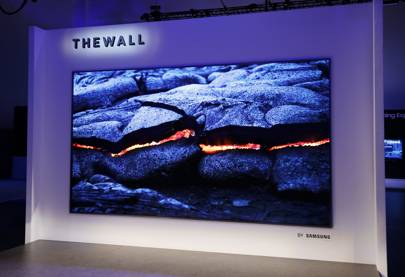 SAMSUNG THE WALLThe latest TV from Samsung, which is set to be released this year, is made of MicroLEDs. The display technology is manufactured and put together one sub-pixel at a time. It has the potential to change the way TVs are made and offers an alternative to OLED screens, which are all manufactured by LG at present.
SAMSUNG THE WALLThe latest TV from Samsung, which is set to be released this year, is made of MicroLEDs. The display technology is manufactured and put together one sub-pixel at a time. It has the potential to change the way TVs are made and offers an alternative to OLED screens, which are all manufactured by LG at present.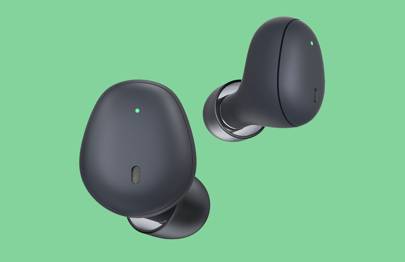 MARS EARBUDSGoogle's Pixel Buds, which can translate what is being said in real-time, haven't gone down well with testers and reviewers. These MARs earbuds are attempting to best the offering from Google. They're created by the companies Line and Naver and are completely wireless. You can hand one of these buds to a friend/stranger who you can't speak the same language as and both people can use the buds at once.
MARS EARBUDSGoogle's Pixel Buds, which can translate what is being said in real-time, haven't gone down well with testers and reviewers. These MARs earbuds are attempting to best the offering from Google. They're created by the companies Line and Naver and are completely wireless. You can hand one of these buds to a friend/stranger who you can't speak the same language as and both people can use the buds at once.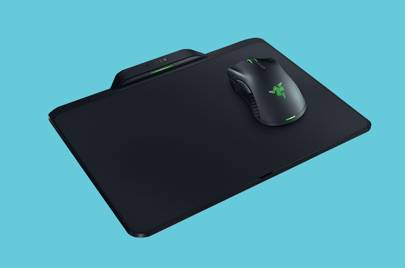 RAZER MAMBA HYPERFLUXThe new Razer Mamba HyperFlux is a wireless mouse that doesn't suffer from the biggest problem of wireless mice. It's lightweight and crucially doesn't need charging. The company says a magnetic field transfers power to the mouse. "This technology creates indefinite power for the mouse and eliminates the need for a battery," Razer says.
RAZER MAMBA HYPERFLUXThe new Razer Mamba HyperFlux is a wireless mouse that doesn't suffer from the biggest problem of wireless mice. It's lightweight and crucially doesn't need charging. The company says a magnetic field transfers power to the mouse. "This technology creates indefinite power for the mouse and eliminates the need for a battery," Razer says.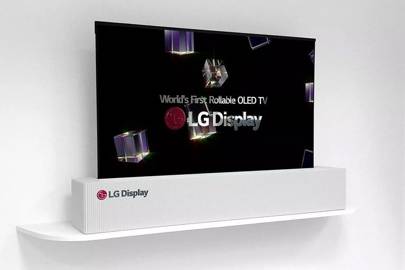 LG ROLLABLELG's latest TV is a 65-inch OLED that can be rolled-up. The company, which currently makes all OLED displays sold commercially (even those in other TVs), has created a version that can be compacted into a small case. There aren't any plans to release the device yet but the flexible screen shows how the company is approaching future TVs.
LG ROLLABLELG's latest TV is a 65-inch OLED that can be rolled-up. The company, which currently makes all OLED displays sold commercially (even those in other TVs), has created a version that can be compacted into a small case. There aren't any plans to release the device yet but the flexible screen shows how the company is approaching future TVs.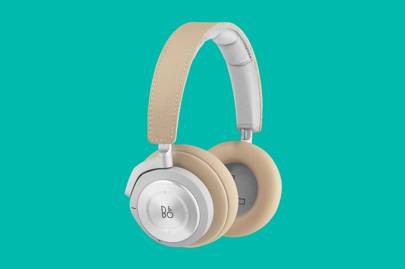 BEOPLAY H9IBeoplay's latest premium headphones are set to launch later this year. They feature advanced noise cancellation, proximity sensors, and are wireless via Bluetooth. The headphones come in two colours (black and beige), claim to have 18 hours of playtime and feature a stylish aluminium touch panel for controlling your music.
BEOPLAY H9IBeoplay's latest premium headphones are set to launch later this year. They feature advanced noise cancellation, proximity sensors, and are wireless via Bluetooth. The headphones come in two colours (black and beige), claim to have 18 hours of playtime and feature a stylish aluminium touch panel for controlling your music.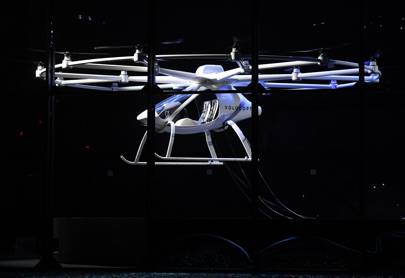 VOLOCOPTERDubbed the Volocopter, this personal flying machine was showcased at CES by Intel. It's created by a German startup, which goes by the same name as the machine, and has 18-rotors. During Intel's keynote presentation the part-drone, part-helicopter was flown across the stage. It's still a prototype at this stage but it is claimed the vehicle has a flight time of 30 minutes and can travel for 17 miles during one journey.
VOLOCOPTERDubbed the Volocopter, this personal flying machine was showcased at CES by Intel. It's created by a German startup, which goes by the same name as the machine, and has 18-rotors. During Intel's keynote presentation the part-drone, part-helicopter was flown across the stage. It's still a prototype at this stage but it is claimed the vehicle has a flight time of 30 minutes and can travel for 17 miles during one journey.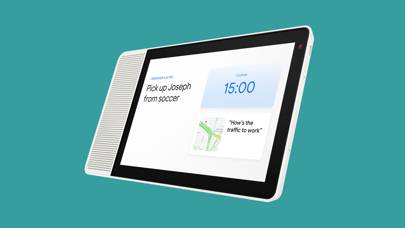 LENOVO SMART DISPLAYIt seems the next generation of home smart assistants will all have screens. Amazon led the way with the Echo Show and now others are following suit. At CES this year, Google announced its collaborations with a number of companies to embed its Google Assistant into their screen-laden hardware. The pick of the bunch is Lenovo's Smart Display, which is better designed than the competition. As a result, it has Google Maps, YouTube, a built-in CPU, GPU and Wi-Fi and Bluetooth.
LENOVO SMART DISPLAYIt seems the next generation of home smart assistants will all have screens. Amazon led the way with the Echo Show and now others are following suit. At CES this year, Google announced its collaborations with a number of companies to embed its Google Assistant into their screen-laden hardware. The pick of the bunch is Lenovo's Smart Display, which is better designed than the competition. As a result, it has Google Maps, YouTube, a built-in CPU, GPU and Wi-Fi and Bluetooth.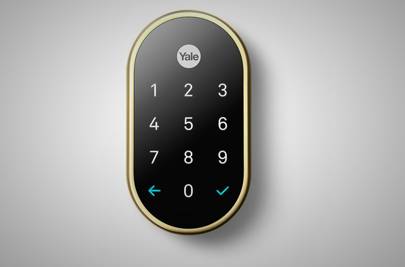 NEST X YALE LOCKGoogle's Nest has finally revealed what the smart home lock its produced with Yale will look like.The sleek-looking entry system has a battery-powered (four AA ones) touch-screen that lets you enter passcodes. These can be customised to individuals and the device is able to store up to 250 of them, making it ideal for small businesses as well. The companies plan to start selling the product in March this year but haven't revealed how much it will cost yet.
NEST X YALE LOCKGoogle's Nest has finally revealed what the smart home lock its produced with Yale will look like.The sleek-looking entry system has a battery-powered (four AA ones) touch-screen that lets you enter passcodes. These can be customised to individuals and the device is able to store up to 250 of them, making it ideal for small businesses as well. The companies plan to start selling the product in March this year but haven't revealed how much it will cost yet.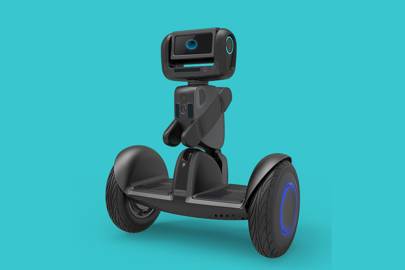 LOOMOThere was a time where Segway was only known for its clunky personal scooters. Now it has a much bigger focus on robots. It has revealed the Loomo robot, which comes in a number of models. It acts as part hoverboard and part autonomous robot, equipped with facial recognition technology. The business version of the robot can carry 100kg of goods and Segway hopes it will be used as a delivery bot in the future.
LOOMOThere was a time where Segway was only known for its clunky personal scooters. Now it has a much bigger focus on robots. It has revealed the Loomo robot, which comes in a number of models. It acts as part hoverboard and part autonomous robot, equipped with facial recognition technology. The business version of the robot can carry 100kg of goods and Segway hopes it will be used as a delivery bot in the future.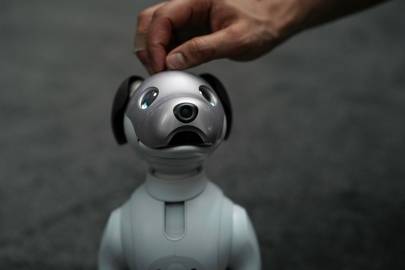 SONY AIBOThe Japanese company has rebooted its 1999 robotic dog. The new Aibo, which will only be available in Japan initially, has OLED eyes and can plod around a room. The dog is also able to listen to commands and, in theory at least, sit like a good boy. When it goes on sale it'll cost 198,000 JPY (around £1,300) but also has a monthly service fee of about £20.
SONY AIBOThe Japanese company has rebooted its 1999 robotic dog. The new Aibo, which will only be available in Japan initially, has OLED eyes and can plod around a room. The dog is also able to listen to commands and, in theory at least, sit like a good boy. When it goes on sale it'll cost 198,000 JPY (around £1,300) but also has a monthly service fee of about £20.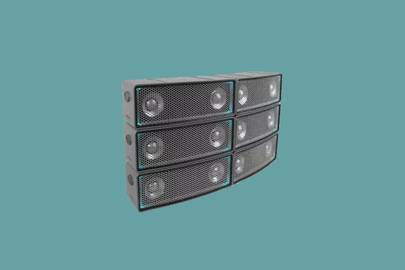 SOUNDOT SPEAKERSWhen watching TV or listening to music, everyone has different requirements. These modular speakers from Soundots offer a flexible speaker system. The devices can be connected physically as well as digitally. "Simply add more sound, reshape your stack or take a couple of speakers with you on the go," the company says. It adds that it's possible to connect 65,000 of the speakers at once.
SOUNDOT SPEAKERSWhen watching TV or listening to music, everyone has different requirements. These modular speakers from Soundots offer a flexible speaker system. The devices can be connected physically as well as digitally. "Simply add more sound, reshape your stack or take a couple of speakers with you on the go," the company says. It adds that it's possible to connect 65,000 of the speakers at once.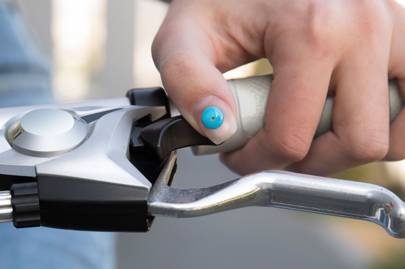 UV SENSEL'Oreal's UV Sense is a tiny sticker that can be placed on your fingernail. The tiny device is a sensor that is able to report how much UV a person has been exposed to. The sensor records how much UV light it has been exposed to and then can transfer the data to a smartphone. Instead of using Bluetooth of Wi-Fi the sensor transfers data with NFC tech, the same thing that makes contactless mobile payments possible.
UV SENSEL'Oreal's UV Sense is a tiny sticker that can be placed on your fingernail. The tiny device is a sensor that is able to report how much UV a person has been exposed to. The sensor records how much UV light it has been exposed to and then can transfer the data to a smartphone. Instead of using Bluetooth of Wi-Fi the sensor transfers data with NFC tech, the same thing that makes contactless mobile payments possible.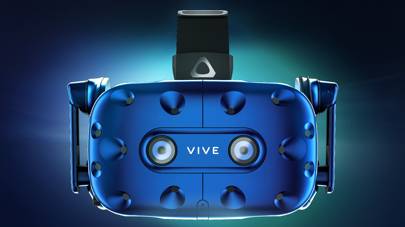 HTC VIVE PROHTC's new virtuality reality headset has its highest resolution screen yet. The headset has two OLED displays and has a combined resolution of 2,880 x 1,600. It's claimed this is a 78 per cent increase in resolution on the current Vive headset. A release data and price hasn't been announced by HTC yet but a wireless adaptor for the headset and previous versions of the device has also been revealed for the first time.
HTC VIVE PROHTC's new virtuality reality headset has its highest resolution screen yet. The headset has two OLED displays and has a combined resolution of 2,880 x 1,600. It's claimed this is a 78 per cent increase in resolution on the current Vive headset. A release data and price hasn't been announced by HTC yet but a wireless adaptor for the headset and previous versions of the device has also been revealed for the first time.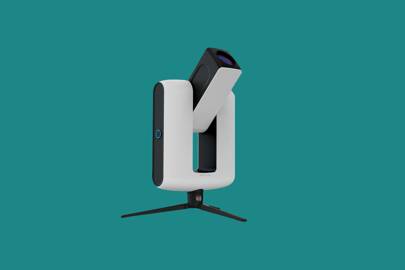 VAONIS STELLINAStargazing has never been so easy. The Stellina telescope is a smart product that photographs the night sky at a push of a button. You hook-up the telescope's accompanying mobile app and it uses GPS to work out where you are. Then it's possible to select a constellation you want to photograph and the telescope will do its best.
VAONIS STELLINAStargazing has never been so easy. The Stellina telescope is a smart product that photographs the night sky at a push of a button. You hook-up the telescope's accompanying mobile app and it uses GPS to work out where you are. Then it's possible to select a constellation you want to photograph and the telescope will do its best.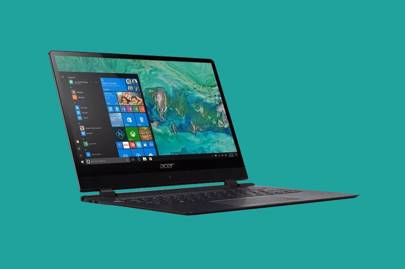 ACER SWIFT 7Acer claims its revamp of the Swift 7 makes it the thinnest laptop in the world – measuring just 8.98mm. As well as this, it has 8GB of Ram, a 14-inch HD display and features Gorilla Glass. It's made with a unibody aluminium chassis and also has a 4G antenna within.
ACER SWIFT 7Acer claims its revamp of the Swift 7 makes it the thinnest laptop in the world – measuring just 8.98mm. As well as this, it has 8GB of Ram, a 14-inch HD display and features Gorilla Glass. It's made with a unibody aluminium chassis and also has a 4G antenna within.


Your Opinion is valid .